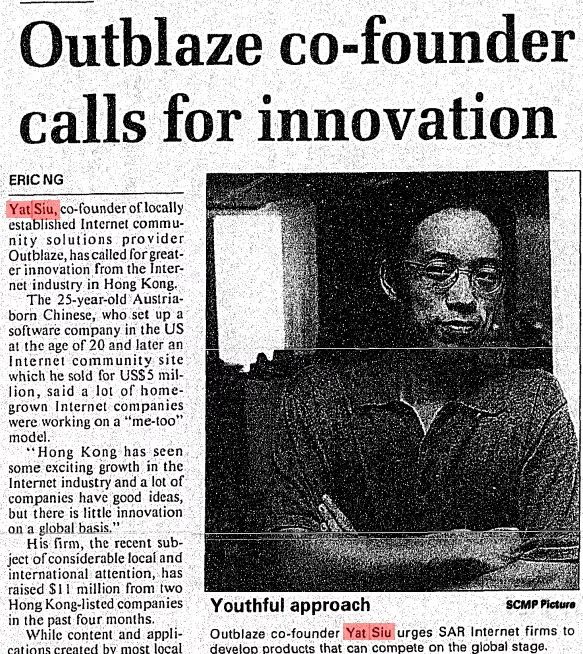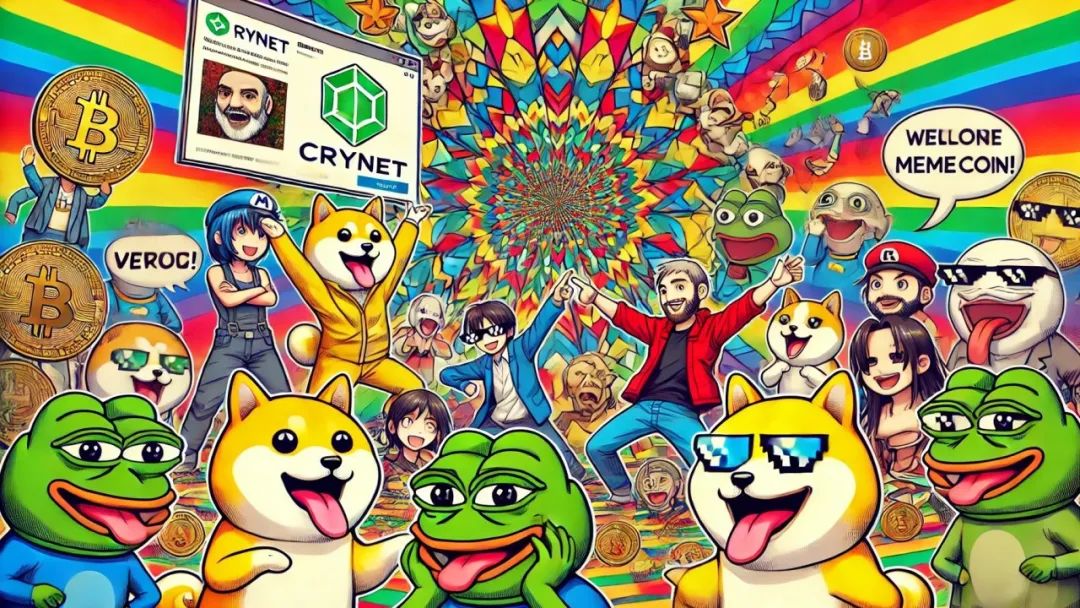When cryptocurrency becomes as useful to businesses as the Internet was in the 1990s, it will reach a turning point.
Written by Sam Reynolds, CoinDesk
Translation: Catherine
As a venture capitalist, Yat Siu has been in the field of cryptocurrency investment for ten years and has seen a lot.
Animoca Brands, co-founded by Hong Kong-based venture capital studio and game developer Siu, has grown into one of the most influential brands in Web3 culture, with data provider CoinGecko estimating the market value of tokens issued by Animoca Portfolio Companies to exceed US$45 billion.
But the 2022-23 cryptocurrency winter will be a severe test for Animoca, with the tokens of many of its companies falling by nearly 90%. In the abyss of the dark period of February 2023, the Financial Times even doubted whether Animoca could survive the storm.
Of course, times have changed. Bitcoin’s price soared by more than 120% in 2024, the U.S. president is about to take office and support cryptocurrencies, and Animoca recently expanded its office space in Hong Kong nearly fourfold, despite the shrinking local traditional financial markets.
This series is brought to you by Consensus Hong Kong. From February 18 to 20, come and experience the most influential activities in the field of Web3 and digital assets.Sign up now and use code ICPCHINA15 to receive a 15% discount。
Siu now believes the crypto industry is at a turning point, similar to the turning point he observed in the 1990s when the Internet first transformed business.
At the time, Hong Kong’s clothing industry (now a relic of the city) relied on shipping samples to customers for inspection during production, there was no Slack, Dropbox or FTP, and the resolution provided by fax machines was not clear enough to complete the task.
In a recent interview with CoinDesk at Animoca’s Hong Kong headquarters, Siu recalled: People used to design patterns and send them to the United States through DHL. rdquo; Siu said the process takes several days to complete, with some companies costing as much as $80,000 a month.
However, a solution came up with Siu, who runs one of the first broadband Internet service providers that allowed garment factories to perform high-resolution scans (previously difficult due to limited bandwidth) and send them to customers in the West.
The use of broadband Internet has made the customer review process infinitely cheaper and more efficient, eliminating the need for what Siu calls the crazy practice of relying on physical delivery to obtain design approval.

A 2000 newspaper clippings from the South China Morning Post interviewed Yat Siu about his work at a former Internet startup (the South China Morning Post file).
Siu equates this innovation with the emergence of stablecoins and predicts that traditional financial institutions will eventually adopt stablecoins on a large scale.
He predicts: If you want to do commercial trade with the United States, you need to have a crypto track. rdquo;
“Over time, it can become a business friction if someone says, I want to send you some Tether or USDC, and the other party says, I can only accept wire transfers, that doesn’t work.” rdquo; Siu said.
In Asia, the use of stablecoins is already common in areas such as Supply Chain Finance. Siu explained that profit margins in the fashion industry are declining. When stablecoins are sufficient, it makes no sense to use wire transfers to pay supply chain partners.
He pointed out: stablecoins are becoming indispensable in reducing the cost and accelerating the speed of these transactions. rdquo;
In Siu’s view, this is the first part of the mass adoption of cryptocurrencies in 2025.

Memecoins builds communities
In Siu’s view, the next step is to expand memecoin more broadly into the entire blockchain ecosystem.
“I expect memecoin to launch its own L1 or L2, which are no longer just tokens, they are building communities and ecosystems. rdquo; Siu said: Memecoin are essentially cultural symbols that are attracting attention and building narratives that resonate with people outside of financial speculation. rdquo;
Siu said the NFT is following a similar trajectory, transforming from an independent asset to an integral part of a broader ecosystem.
Siu said: NFT projects are no longer just about issuing tokens, they are also about creating ecosystems with cultural and symbolic value, citing examples such as Solana’s growing collection of memecoin, some of which are now launching NFT to enhance engagement and deepen connection with the community.
Siu pointed out that for memecoin and NFT to continue to succeed, they must develop into a platform for the community to build games, apps and other experiences, rather than just speculation.

Crypto games have strong momentum
Web3 games are not a new phenomenon, but efforts so far have not resonated with consumers. During the bull market in 2021, large studios ‘moves to include NFT in games such as Ubisoft’s AAA series Ghost Action met with a lukewarm response from the market.
Similarly, Web3 native games like Decentraland have failed to attract a player base that matches the billion-plus dollar valuation of their tokens.
Other games, such as Off the Grid, promised to bridge the gap between Web2 and Web3 games with beautiful visuals and a focus on games first and encryption second, but seemed to disappear after a few weeks.
However, Siu remains optimistic about cryptographic games.
He believes that games are a powerful entry point for Web3, where culture, community and ownership come together to create something bigger. In this ecosystem, in-game asset trading becomes an integral part of the game itself, and it naturally develops from concepts such as skin trading in games such as Counter-Strike that many people are already familiar with.
“To attract Web2 gamers, the focus needs to be on building network effects, creating a fun and engaging game, and increasing the benefits of ownership and trading. rdquo;Siu said: By 2025, we will see that Web2 gamers won’t even distinguish whether it’s a Web3 game, they will like it itself, and the benefits of blockchain will be an added bonus.” rdquo;
“They just want to play.& rdquo; He added.

Reputation is currency
No economy can function properly without trust between parties and counterparties, Siu said that while blockchain transparency helps create an environment of higher trust, it also requires a system to measure reputation.
“Reputation is a currency. It’s not just about rewards, but also about how the Internet evaluates you and your contributions. rdquo; Siu said.
He explained that reputation networks like Animoca’s Moca ID, which allows for a uniform but decentralized identification method among all companies in Animoca’s portfolio, can do this.
In theory, this would be similar to traditional finance’s Equifax, allowing services such as unsecured crypto loans-a lot different from the current over-mortgage lending system.
“If you don’t have credibility, I can’t build trust with you. rdquo; Siu said: Imagine the reputation you have built over the years. Would you risk losing it because of one wrong move?” rdquo;

Not just profits
Those who do not have the opportunity to own property and generate income will not be able to understand capitalism, which, despite its imperfections, is still the best option for society, Siu said.
He has said before: Web3 can save the capitalist narrative by turning users into stakeholders and co-owners, and warned that the roots of communism come from a sense of inequality.
For Siu, Web3 represents an opportunity to build a better form of capitalism that is more inclusive and participatory, and he urges the industry to focus on blockchain’s transformative potential rather than short-term profits, and warns against a phobic mentality of missing out.
Siu said: Let’s remind ourselves that cryptocurrencies are actually helping us build something bigger, we’re all making money, this industry is great, which is good, but let’s remind ourselves why we are really here. rdquo;
Welcome to join the official social community of Shenchao TechFlow
Telegram subscription group: www.gushiio.com/TechFlowDaily
Official Twitter account: www.gushiio.com/TechFlowPost
Twitter英文账号:https://www.gushiio.com/DeFlow_Intern



